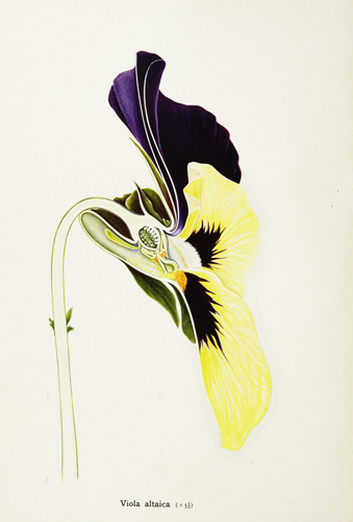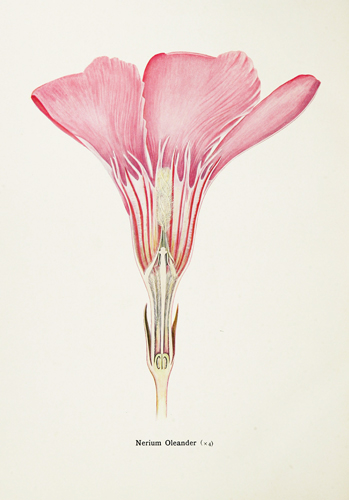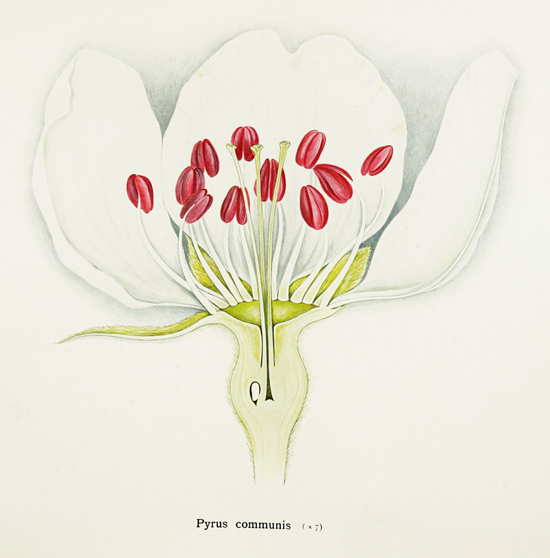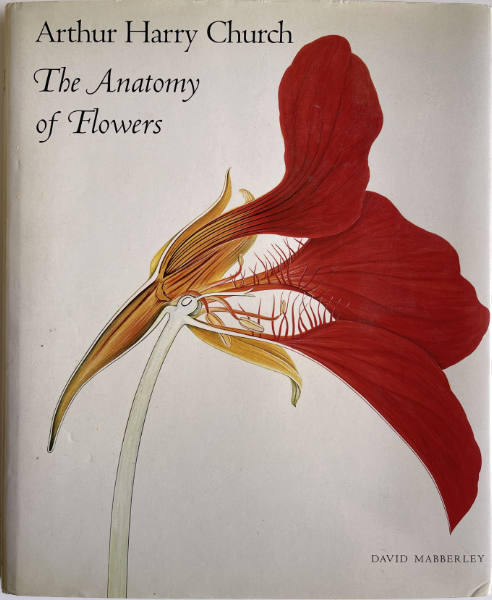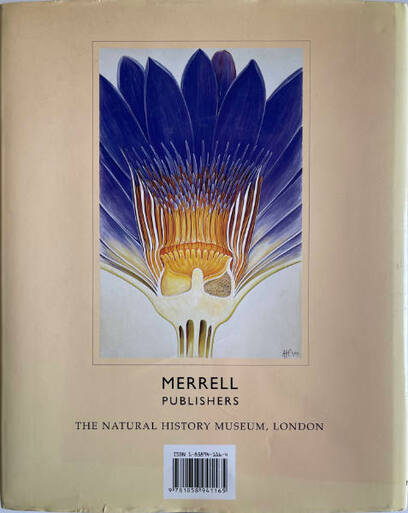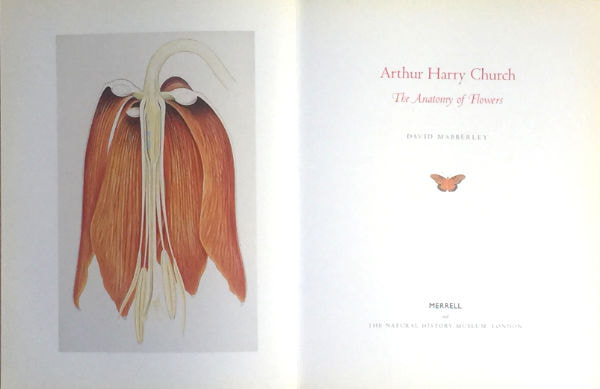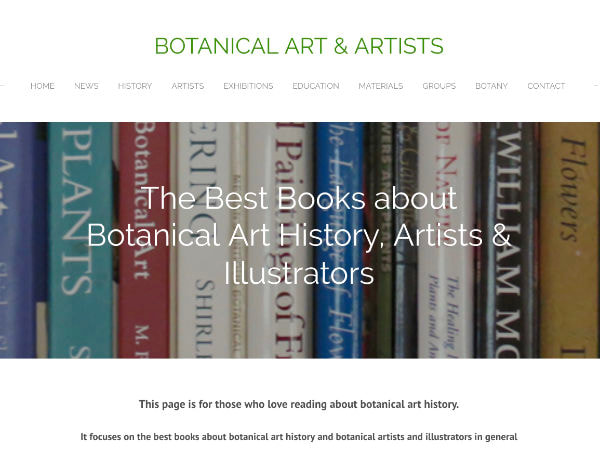- Home
- NEWS
-
HISTORY
- What is Botanical Art?
- What is Botanical Illustration?
- Botanical Art History Books >
- Herbals
- Florilegia and Flora
- Patrons of Botanical Art >
- Past Masters - Botanical Art and Illustration >
- Famous Asian Botanical Artists (600-1900)
- 20th & 21st Century Botanical Artists >
- Botanical Photographers
- Botanical and Herbal Art Online
-
ARTISTS
- Botanical Artists in the UK
- Botanical Artists in North America
- Botanical Artists in Europe
- Botanical Artists in Australia and New Zealand
- Botanical Artists in Asia
- Botanical Artists in Africa
- Botanical Artists in Latin America
- Botanical Printmakers, Photographers, Sculptors et al
- The Jill Smythies Award
- Botanical Artists on Facebook
- Botanical Art Blogs
-
Exhibitions
- Calls for Entries - OPEN exhibitions
- Online Exhibitions >
- RHS Botanical Art & Photography Shows >
- The Shirley Sherwood Gallery of Botanical Art >
- Hunt International Exhibition of Botanical Art & Illustration
-
UK
>
- North America >
- Europe >
- Australasia >
- Asia >
- Africa
- ARCHIVE: World Wide Exhibition of Botanical Art 2018
-
Education
- NEW BOOKS about Botanical Art and Illustration >
-
Best Botanical Art Instruction Books
>
- Tips and Techniques >
- Botanical Art Video Tips >
- Online Botanical Art Instruction >
- International Directory: Botanical Art Teachers
- International Directory of Botanical Art Courses >
- Artist Residencies, Scholarships and Bursaries
- Diplomas and Certificates >
- Distance Learning Courses
- Talks, Lectures & Tours
- Botanical Education on Facebook
- Materials
- Groups
-
Botany
- Why botany matters to artists
- Botany Books for artists >
- Scientific botanical illustration
- Plant Forms and Anatomy
- Plant Evolution and Taxonomy
- Plant Names and Botanical Latin
- Botanical Dictionaries
- How to Identify Plants
- Recording a Plant / Sketchbooks >
- Botanic Gardens & Herbaria >
- Blogs about Plants and Flowers
- Contact
Arthur Harry Church (1865-1937) was a botanist
who focused on the morphology and structure of plants
and began to illustrate to demonstrate his findings.
He has since earned a reputation as a scientific botanical illustrator of note.
who focused on the morphology and structure of plants
and began to illustrate to demonstrate his findings.
He has since earned a reputation as a scientific botanical illustrator of note.
Biography - education and employment
|
Born 24th March 1865 in Plymouth, Devon.
Education and Academic Employment: he studied Botany at University College, Aberystwyth and graduated with an (external) first class degree from London University (in 1891). This enabled him to win science scholarship to Jesus College at Oxford University. He came up to Oxford in 1891 and spent the rest of his life participating in scholarship and the academic life of Oxford.
|
His approach to botany and illustration
'one of the most ablest and original botanists of his time'
|
Church focused on morphology and the structure of plants. His drawings of the morphology of flowers and plants are considered to be some of the finest in the UK.
He became very knowledgeable about how flowers systems worked - but never travelled as other botanists did to see plants in their natural habitats. Church's particular skill was in developing techniques for examination of flowers and plants in ways which revealed all their inner structures while leaving all the parts with crisp sharp edges in his illustrations of cross-sections and diagrams. He was also meticulous in the way he painted and developed techniques which allowed him to maintain precision in his illustrations as well as his dissections. |
Publications
|
In 1904 he published On the relation of phyllotaxis to mechanical law which includes:
In 1908, he published Part 1 of Types of Floral Mechanism (Clarendon Press 1908) which was intended to be the first volume of an account of "The Hundred Best Flowers" as a way of providing a general explanation of floral morphology. It comprises large coloured and uncoloured illustrations of 12 different types of flowers and associated text. This first part deals with the flowering plants of winter and early spring (January to April). It was intended that there would be three more parts covering the later months of the year. However his insistence on the quality of the reproduction of the illustrations - and associated costs - meant that no further volumes were published. |
His "Botanical Memoirs" contained most of what he wanted to say about plants in print. These were essentially summaries of the various materials he used in lectures. They were issued in 15 volumes by Oxford University Press between 1919 and 1925.
He married and had three daughters - each of which had the name of a plant in flower at the time of her birth as her second name. He died in Oxford on 24th April 1937 aged 72. His obituary goes some way to explain why he developed the ideas he had and why his work was neglected for a long time. It also explains in detail the history behind each of his publications and their timing. He was an old fashioned nineteenth century botanist of supreme excellence |
The Arthur Harry Church Drawings Collection
|
The Arthur Harry Church Drawings Collection is the largest collection of the work of Arthur Harry Church and includes 773 original watercolour drawings.
They are part of the Permanent Collection of the Natural History Museum. The original intention was that they would be used - with associated text - in the remaining volumes of his book on floral mechanisms.. However his portfolio of botanical illustrations of the internal structures and morphology of flowers lay unnoticed in the Museum of Natural History for several decades prior to the publication of this book by Professor David Mabberly in 2000. |
VIEW
- The Structure of a Flower - an EXCELLENT page of dissection images by Arthur Harry Chruch revealing the structure and anatomy of flowers - which can be viewed online - on the website of the Natural History Museum
- eight pen and ink drawings of Algae on card (1918) by Church, A. H. (Arthur Harry), 1865-1937, artist. | Natural History Museum
Arthur Harry Church: The Anatomy of Flowers
by A.H. Church and David J. Mabberley
by A.H. Church and David J. Mabberley
Most of the drawings in this volume remained unpublished while Church was alive and are published here for the first time; they demonstrate the modernity of his technique and style....
The reproduction of images is absolutely superb and most are a full page. Colour reproduction and definition is excellent.
|
This stunning monograph uses previously unpublished material from the 773 drawings by Church in the permanent collection of the Library of the Natural History Museum to reveal:
The author, Professor David Mabberley AM is a British-born botanist, educator and writer who has held botanical appointments at universities around the world and is renowned for his books about botanical artists. He's currently Emeritus Professor at the University of Leiden. In 2008 he became the Keeper of the Herbarium, Library, Art and Archives at the Royal Botanic Gardens, Kew |
Hardcover: 128 pages
Publisher: Merrell Publishers Ltd; 1st Edition edition (20 Sept. 2000) Rated an average of 5.0 out of 5 stars based on
BUY THIS BOOK The price of this book has increased enormously since I bought my copy. It's unlikely to decrease but you might get lucky! Be prepared to accept less than perfect book covers. I'd very much RECOMMEND checking if you can view the contents before you get a copy - through a reputable library or a good friend. You're very unlikely to get a loan copy to take home!! Arthur Harry Church: The Anatomy of Flowers
Arthur Harry Church:The Anatomy of Flowers
|
Wonderful book of a botanical artist who is largely unknown. Plates are beautifully reproduced on good quality paper. Shame it is out of print.
Reference
|
READ ONLINE - Botanical Memoirs Series
|
Other online references:
|
More Past Masters of Botanical Art & Illustration
|
Resources about Botanical Art and For Botanical Artists
ABOUT: About the Author | Contact | Testimonials | Privacy Policy COPYRIGHT 2015-22: Katherine Tyrrell all rights reserved.
|
NEWS
News Blog about artists, awards, exhibitions etc. |
EXHIBITIONS
- Calls for Entries - Exhibitions around the world - Online Exhibitions - RHS Exhibitions - Hunt Exhibitions ORGANISATIONS
- Botanical Art Societies - national / regional / local - Florilegium & Groups - Botanical Art Groups on Facebook |
EDUCATION
- Tips and Techniques - Best Botanical Art Instruction Books - Directory of Teachers - Directory of Courses - Online Botanical Art Courses - Diplomas and Certificates - Talks, Lectures and Tours ART MATERIALS (Paper / Vellum) BOTANY FOR ARTISTS - Scientific Botanical Illustration - Best Botany Books for Artists - Plant Names & Botanical Latin BOTANIC GARDENS & Herbaria |
FEEDBACK
Please send me . - news to share - info. about exhibitions - any suggestions for what you'd like to see on this website ADVERTISE Contact me if you'd like to promote workshops and courses on this site. AFFILIATION This website is free to you but not for me! (See Affiliate Income below) |
|
Cookies, Personal Data & Privacy tells you how this site relates to and impacts on you and your privacy - and your choices.
Product & company names may be trademarks of their respective owners |
About Affiliate Income: This website has been created to share information not to make a profit. I am an Amazon Associate and earn from qualifying purchases (e.g. books from Amazon) which helps offset costs associated with maintaining this very large website.
|
- Home
- NEWS
-
HISTORY
- What is Botanical Art?
- What is Botanical Illustration?
- Botanical Art History Books >
- Herbals
- Florilegia and Flora
- Patrons of Botanical Art >
- Past Masters - Botanical Art and Illustration >
- Famous Asian Botanical Artists (600-1900)
- 20th & 21st Century Botanical Artists >
- Botanical Photographers
- Botanical and Herbal Art Online
-
ARTISTS
- Botanical Artists in the UK
- Botanical Artists in North America
- Botanical Artists in Europe
- Botanical Artists in Australia and New Zealand
- Botanical Artists in Asia
- Botanical Artists in Africa
- Botanical Artists in Latin America
- Botanical Printmakers, Photographers, Sculptors et al
- The Jill Smythies Award
- Botanical Artists on Facebook
- Botanical Art Blogs
-
Exhibitions
- Calls for Entries - OPEN exhibitions
- Online Exhibitions >
- RHS Botanical Art & Photography Shows >
- The Shirley Sherwood Gallery of Botanical Art >
- Hunt International Exhibition of Botanical Art & Illustration
-
UK
>
- North America >
- Europe >
- Australasia >
- Asia >
- Africa
- ARCHIVE: World Wide Exhibition of Botanical Art 2018
-
Education
- NEW BOOKS about Botanical Art and Illustration >
-
Best Botanical Art Instruction Books
>
- Tips and Techniques >
- Botanical Art Video Tips >
- Online Botanical Art Instruction >
- International Directory: Botanical Art Teachers
- International Directory of Botanical Art Courses >
- Artist Residencies, Scholarships and Bursaries
- Diplomas and Certificates >
- Distance Learning Courses
- Talks, Lectures & Tours
- Botanical Education on Facebook
- Materials
- Groups
-
Botany
- Why botany matters to artists
- Botany Books for artists >
- Scientific botanical illustration
- Plant Forms and Anatomy
- Plant Evolution and Taxonomy
- Plant Names and Botanical Latin
- Botanical Dictionaries
- How to Identify Plants
- Recording a Plant / Sketchbooks >
- Botanic Gardens & Herbaria >
- Blogs about Plants and Flowers
- Contact
